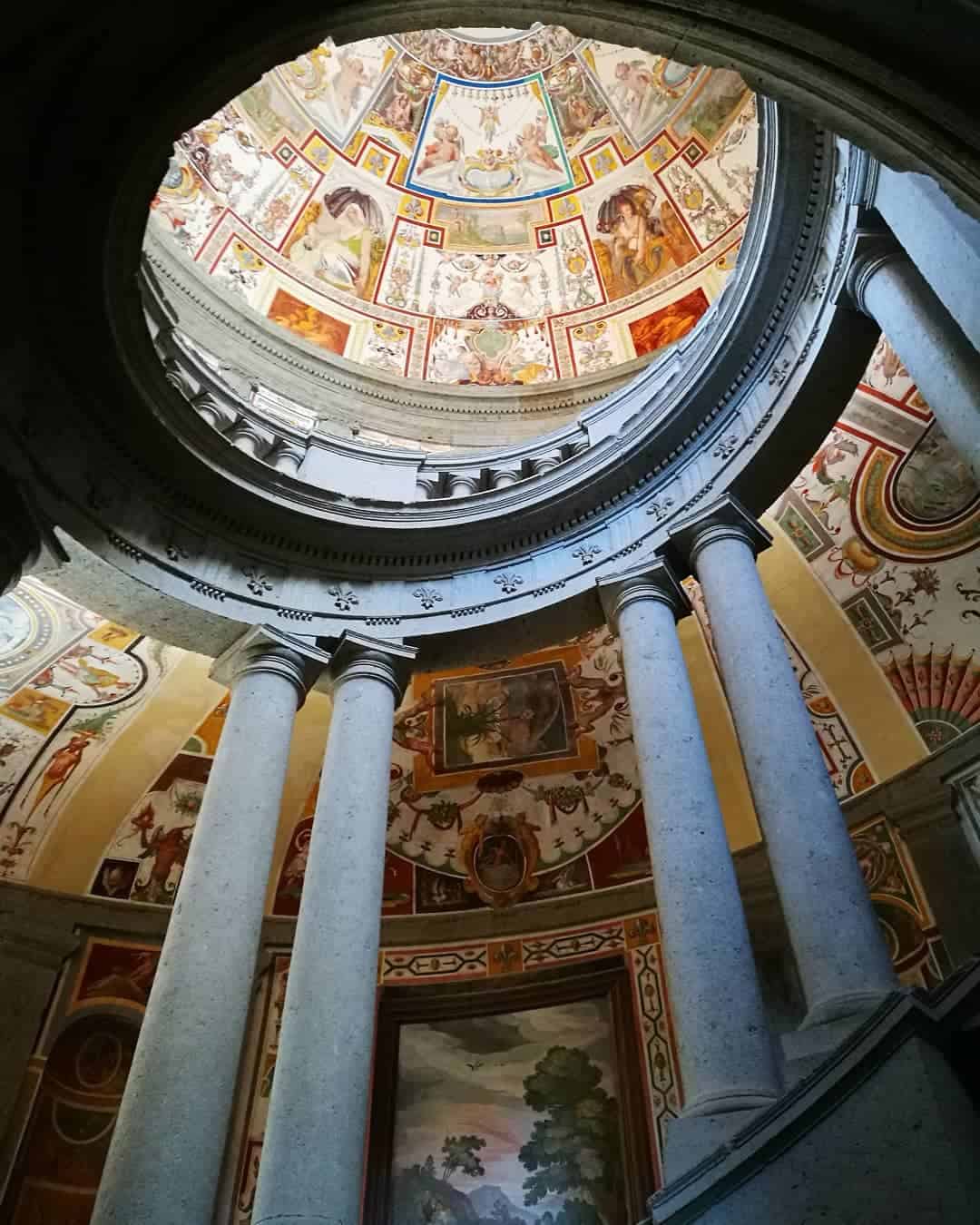In Lazio, among hazelnut and tufaceous ridges there is a magnificent village that houses one of the jewels of architecture of all time: Caprarola

Rome, 1534.
In that year Giulio de' Medici died, nephew of Lorenzo the Magnificent and at that time pope of the Catholic church with the name of Clement VII.
With the following conclave, he ascends to the throne of Pietro Alessandro Farnese, known as Pope Paul III. A pontiff who will be able to tell his story, considering that in the history books he meets him when he leads the Council of Trent and when he follows with Michelangelo the realization of one of the most famous frescoes of all time, the Last Judgment of the Sistine Chapel.
But when he was appointed pope, our Alessandro was struggling with another memorable project. A project that will have rather long vicissitudes, but that will eventually become one of the icons of the architecture of the '500.
We are north of Rome, in the beautiful village of Caprarola, lying on the eastern side of the Monti Cimini volcanic system. It is here that the Farnese family has its possessions and it is here that Cardinal Alessandro, before becoming pope, delights with his architectural dream.
It is 1530 when the high prelate calls upon one of the greatest architects of the time, Antonio da Sangallo the Younger, to intervene in this lush and tufted woodland.
The designer belongs to a well-known family of artists, who also included among his ranks the famous architects Giuliano da Sangallo and Antonio da Sangallo the Elder (so called precisely to distinguish him from his nephew). And it is interesting to note that when the Farnese - shortly thereafter - it will become pope, it will call Antonio da Sangallo the Younger to put his hand in the most famous and mammoth religious building of the entire West: the Basilica of St. Peter. In reality, today only a colossal wooden model remains of Sangallo's great project ... but this is another story!
In Caprarola, Sangallo has the time to pull up only the pentagonal plan with the five bastions at the corners - the base of the fortress that still today, albeit in different forms, dominates the village.
In the fateful year of 1534, the project is frozen and the cardinal and architect move to Rome, to embark on even more daring paths.
For 25 years the ramparts lie in Caprarola almost as if they were dozing giants, until another Farnese intervenes on the scene - also a cardinal and also Alessandro, nephew of the previous one.
It is 1559 when the second cardinal Alessandro Farnese decides to entrust those bastions to another great star of the architectural firmament of the time: Jacopo Barozzi, known as the Vignola.
The Vignola maintains Sangallo's pentagonal layout, but implements a profound distortion of the design of its predecessor: from fortress the structure is transformed into a sumptuous late Renaissance palace-villa, finished with the pictorial cycles of the Zuccari brothers who celebrate, with their taste distinctly mannerist, the glory of the Farnese family.
But Vignola paid no attention only to the architecture itself.
With a daring urban intervention he created the straight - main thorn of the village - which has as its focal point, located at the top of the axis, the Palazzo Farnese: splendid perspective building on an urban scale, still admirable today in all its design power.




